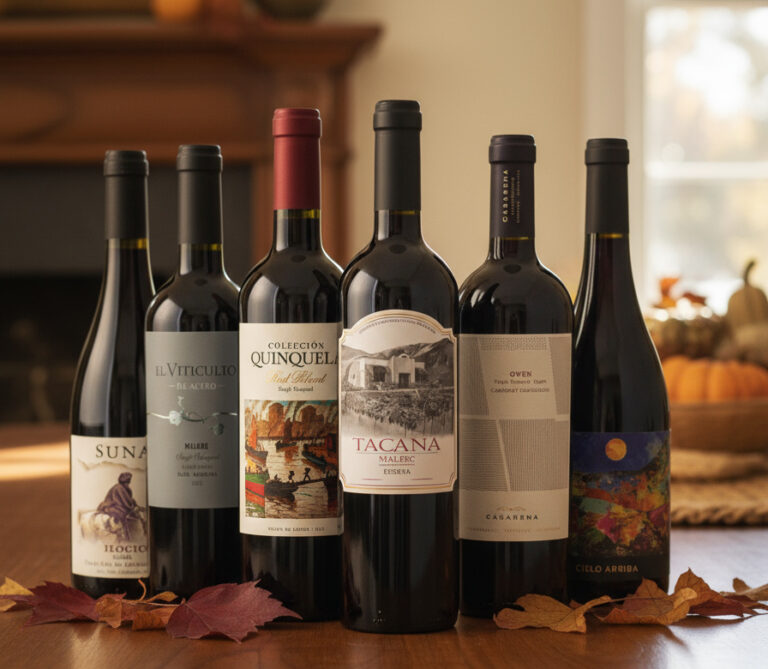[et_pb_section fb_built=”1″ _builder_version=”4.3.2″][et_pb_row _builder_version=”4.3.2″][et_pb_column type=”4_4″ _builder_version=”4.3.2″][et_pb_text _builder_version=”4.3.2″]
Orange wine. Virtually unknown 30 years ago, in recent months the style has become so popular even Newsweek (not exactly on the viticultural vanguard) has been asking: “Orange wine is taking over, but what is it?”
No, orange wine is not made from oranges. It’s made from white grapes, and is the oldest recorded winemaking style in the world.
More on that in a moment. But first, are sommeliers just fancy waiters? This week, Julien explores what different wine “authorities” actually know (including himself)…sommeliers vs. winemakers…wine writers vs. critics…
[/et_pb_text][et_pb_video src=”https://www.youtube.com/watch?v=xMUFlUb4cLA&feature=youtu.be” module_id=”video” _builder_version=”4.3.2″ width=”75%” width_tablet=”90%” width_phone=”95%” width_last_edited=”on|phone” module_alignment=”center”][/et_pb_video][et_pb_text _builder_version=”4.3.2″ hover_enabled=”0″]
Orange wine Cont’d
We have an English wine importer named David Harvey to thank for the confusing name. He re-introduced the style as “orange wine” in 2004, and ever since, most English-speaking people have called it that.
A more technical name is skin-contact or skin-maceration wine, though my personal favorite is the traditional (and more accurate) Georgian name: “karvisperi ghvino,” or amber wine. Let’s call it that instead.
Amber wine originated in the Eastern European country of Georgia over 8,000 years ago. The traditional method of making it, perfected in 6,000 BC, has barely changed since.
Amber winemakers use massive (big enough a grown man can get inside), beeswax-lined clay pots called qvevri. They fill the qvevri with juice, skins, stems, and seeds, then leave everything to ferment with natural yeast for two weeks — at which point they seal the whole thing and bury it up to the neck, leaving it to age for 5-7 months.
[/et_pb_text][et_pb_image src=”https://bonnerprivatewines.com/wp-content/uploads/2020/07/kvevri-wine.jpg” align=”center” _builder_version=”4.3.2″][/et_pb_image][et_pb_text _builder_version=”4.3.2″]
A winemaker beside his traditional qvevri in 1881
Re-emerging above ground, the mixture passes through a strainer into a smaller qvevri for more aging. There are no vats, barrels, or fancy monitoring systems (though some newcomers have been experimenting with a little oak).
Although made from white grapes, amber wine is not white wine. For white wine, winemakers separate juice from skin and seed as quickly as possible. The clarified juice ferments in tanks by itself.
For red wine, winemakers crush the berries while they’re still in contact with the seeds, skins, and stems; the whole mess ferments together. This is why red wines are more tannic, higher in antioxidants, and tend to have more “body” than whites. (The health benefits of those tannins and antioxidants are why doctors tend to recommend red wine over white.)
The main difference between the two lies not in the color of the grapes, but in whether they ferment with the skins and seeds.
The qvevri method treats white grapes like red, so tannins leach into the juice as it ferments. The resulting wine has a deeper color (anywhere between straw yellow, bright orange, and deep amber, depending on how long it’s fermented), a more robust body, and spicier flavors. (This fermentation process also preserves the same health benefits found in red wine.)
Jody Brix Towe, a California winemaker who has embraced the style, says, “There’s so much more texture and flavor in the [amber] wine because the skin just gives it so much more than when you direct-press and take away all the unique parts… Especially with Pinot Gris, there’s so much spiciness in the skin that you lose…”
While amber wines can vary wildly from one to the other, there are some commonalities among them all. Amber wines are bold, and often have a rich, yeasty tang reminiscent of beer. They also tend to exhibit honeyed tones and an earthy spice. They pair well with much bolder dishes than whites: spicy chicken, fermented veggies like kimchi and sauerkraut, even curry.
You can technically make any white wine grape into amber wine. Yet, Georgians most commonly use their native rkatsiteli, while Italians — though they have hundreds of suitable native grapes — often use pinot grigio.
Amber wine was for a long time the most popular style in Georgia, as well as some parts of Slovenia and northern Italy. But as the wine market globalized in the 50s and 60s, white wine became the fashion. The highly technical winemaking required for clear, stable white wines replaced clay pots and other traditional methods with huge steel vats and lots of filtration. Traditionally made, sometimes cloudy amber wines felt stuck in the past.
Yet white wine, for all its clarity and refinement, lacks the full body, layers of flavor, and antioxidants which come from the tannins in grape skins and seeds. Amber wine retains these benefits.
But for all its parallel benefits, amber wine is not red wine. You won’t find any jammy red berry flavors here. Think instead of warm spices, a field of wildflowers in summer, and apples fresh from the tree. Don’t dismiss it as a novelty. Amber wine is a category on its own.
Until Next Week,
The Wine Explorer
[/et_pb_text][/et_pb_column][/et_pb_row][/et_pb_section]



